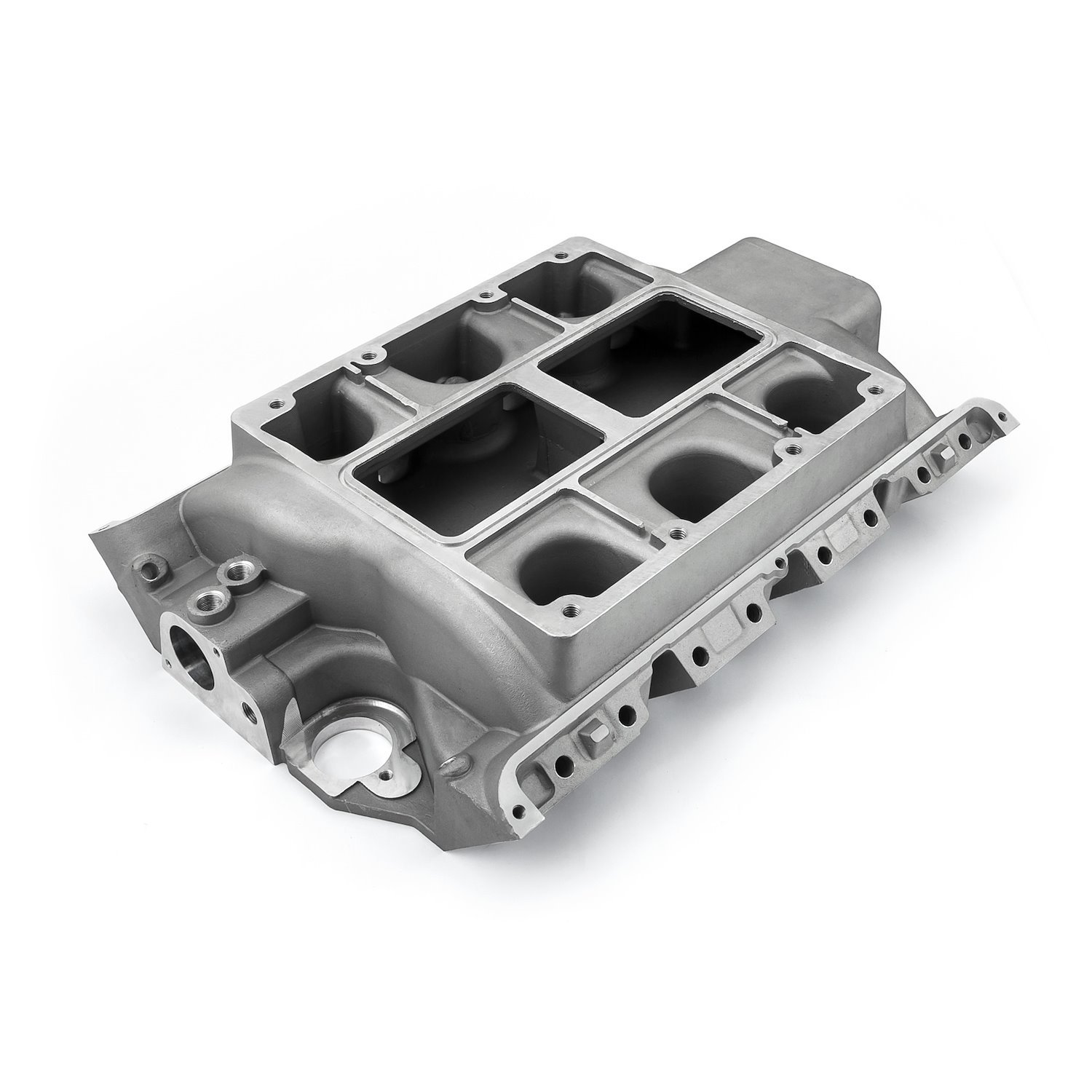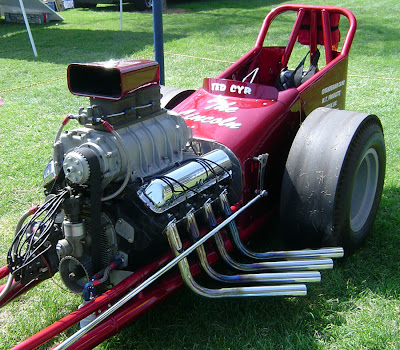A bit off topic, but I would like some opinions from the brain trust on here. 4 or 5 years ago, I got my hands on a 430 MEL core, a 6-71 blower, and an old Weiand Intake manifold to pair the two together. However, it quickly became obvious the Weiand intake was a race only piece that would require things such as a remote thermostat, relocation of the distributor, and crank breather. It only had minimal provisions for coolant passages that I felt would not work well on a street motor, and to be clear, my intention was for the motor to be 100% street functional (idling in traffic, 75 mph sustained interstates, etc.). After researching relocating the distributor and doing the other modifications that it would require to make the Weiand work, I came to the conclusion that it would likely be easier to build the intake manifold I needed instead.
Excuse the dirty engine...

Being the good little engineer that I am, I took the Weiand and made a CAD model of it in UG. I then started another model that had all the features I wanted, including clearance for the stock distributor, the thermostat in the stock location, better water passages, relocation of blow-off valve, etc. I have an image of that model below.

Well, that was about 3.5 years ago, life happened, new job, moved across the country, couldn't sell the old house and shop, blah, blah, blah. Long story short, I am ready to get back on this project by getting a 3D printed plastic model made for fit-up, flow testing, etc. But before I do, the design of the plenum has been bugging me. The Weiand was completely open in the center (see cross section of the CAD model below), resulting a very large plenum. I think this probably worked fine on a drag car that was either idling or at WOT with a healthy amount of boost, but I am concerned that at part throttle operation low boost (or no boost), this is less than optimal.

What do you guys that have played with forced induction applications think? My thoughts are leaning towards redesigning it so the plenum is no wider than the opening in the bottom of the 6-71. This would increase the individual cylinder runner length significantly, and hopefully smooth out the flow. More along the lines of an FE 6-71 intake.

Not that it matters as I want this to be somewhat universal for any street driven application, but the plan / specs for this motor are as follows.
1958 430 MEL
Offset ground crank to BBC journal size. 4.1" stroke (or as close as possible)
4.35" bore
6-71 Blower, up to 12 psi boost
8:1 compression (most likely custom pistons, although 427 BBC flat-tops will get me close)
Should be right around 485 ci all said and done. Street friendly tune concentrating on a big, broad torque curve.
I am not sure what it is going in, but most likely something big and heavy.
Finally, The Weiand's intended purpose...
